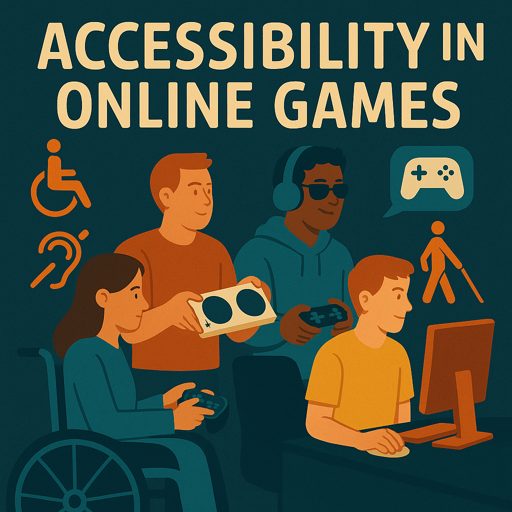Gaming is no longer a niche hobby—it’s a global cultural force. Millions of people log into online games daily to explore virtual worlds, connect with friends, or compete in esports. But as the gaming community grows, so does the responsibility to make sure everyone can play—including people with disabilities.
Accessibility in online games means removing barriers so that all players, regardless of physical, sensory, or cognitive limitations, can enjoy the experience. At our official platform, we believe that inclusivity is not just good ethics—it’s good design, good business, and essential for the future of gaming.
Accessibility refers to the ability of individuals to interact with and enjoy a game regardless of their abilities. This includes features and settings that help people with:
- Mobility impairments (e.g., limited hand movement)
- Visual impairments (e.g., color blindness or low vision)
- Hearing loss (e.g., requiring captions or visual cues)
- Cognitive challenges (e.g., difficulty focusing or processing complex instructions)
An accessible game doesn’t lower the quality or remove challenge—it simply ensures that players can interact with the game in a way that works for them.
Accessibility is not a niche concern. According to the World Health Organization, over one billion people worldwide live with some form of disability. Many are gamers or want to be—but struggle to play due to design barriers.
Benefits of accessible online gaming include:
- Equal opportunity for play and competition
- Broader community engagement
- Reduced social isolation
- Greater independence and self-expression
Games that are accessible open doors to creativity, joy, and social connection for people who might otherwise be excluded.
Modern developers are making big strides in accessibility. Some of the most impactful features include:
Letting players remap buttons, use one-handed modes, or connect adaptive controllers (like the Xbox Adaptive Controller) can make a huge difference for those with limited mobility.
Many games now offer filters or customizable color schemes to support players with different types of color vision.
Including adjustable subtitles for dialogue—and captions for sound cues like footsteps or alerts—helps players who are deaf or hard of hearing stay fully engaged.
For gamers who have difficulty reading text or typing messages, these tools support communication in real-time multiplayer environments.
Options to slow down gameplay, simplify interfaces, or reduce flashing lights and visual clutter support players with cognitive or neurological conditions.
Several developers have made accessibility a top priority. These titles are setting examples for the rest of the industry:
- The Last of Us Part II (Naughty Dog): Widely praised for over 60 accessibility features including auto-aim, high-contrast modes, and full narration for blind players.
- Forza Horizon 5 (Playground Games): Includes sign language interpreters for in-game cutscenes—an industry first.
- Apex Legends and Fortnite: Offer extensive visual and control options, including text chat alternatives and sound visualization.
These successes show that accessibility can be integrated without compromising the artistic or competitive integrity of a game.
Many accessibility features end up being useful to all players—not just those with disabilities.
For example:
- Subtitles help players in noisy environments or non-native speakers.
- Simplified interfaces improve user experience for casual gamers.
- Custom controls allow for more comfortable long sessions.
Inclusive design is universal design. When games are built with flexibility, everyone benefits.
Creating accessible games isn’t about adding features at the last minute—it’s about baking inclusion into the design from day one.
Best practices include:
- Testing with disabled players throughout development
- Hiring accessibility consultants or specialists
- Publishing accessibility guides so players know what to expect
- Responding to community feedback and making updates post-launch
Studios that prioritize these steps show they value their entire player base—not just the majority.
Accessibility is a community issue. Whether you’re a gamer, streamer, or developer, here’s how you can help make gaming more inclusive:
- Share accessibility feedback with developers
- Promote accessible games and features
- Advocate for inclusive options in esports and streaming
- Support organizations focused on gamers with disabilities (like AbleGamers or SpecialEffect)
Even small acts of awareness can contribute to a more welcoming, equitable gaming world.
Online gaming should be a place where everyone can participate, compete, and have fun—regardless of physical ability or background. Accessibility isn’t just a feature; it’s a mindset that values every player’s experience.
As more developers embrace inclusive design, the industry is moving toward a future where games reflect the diversity of the real world. At our official platform, we celebrate this progress and encourage all game creators to keep pushing for better, broader access.
